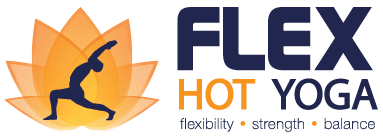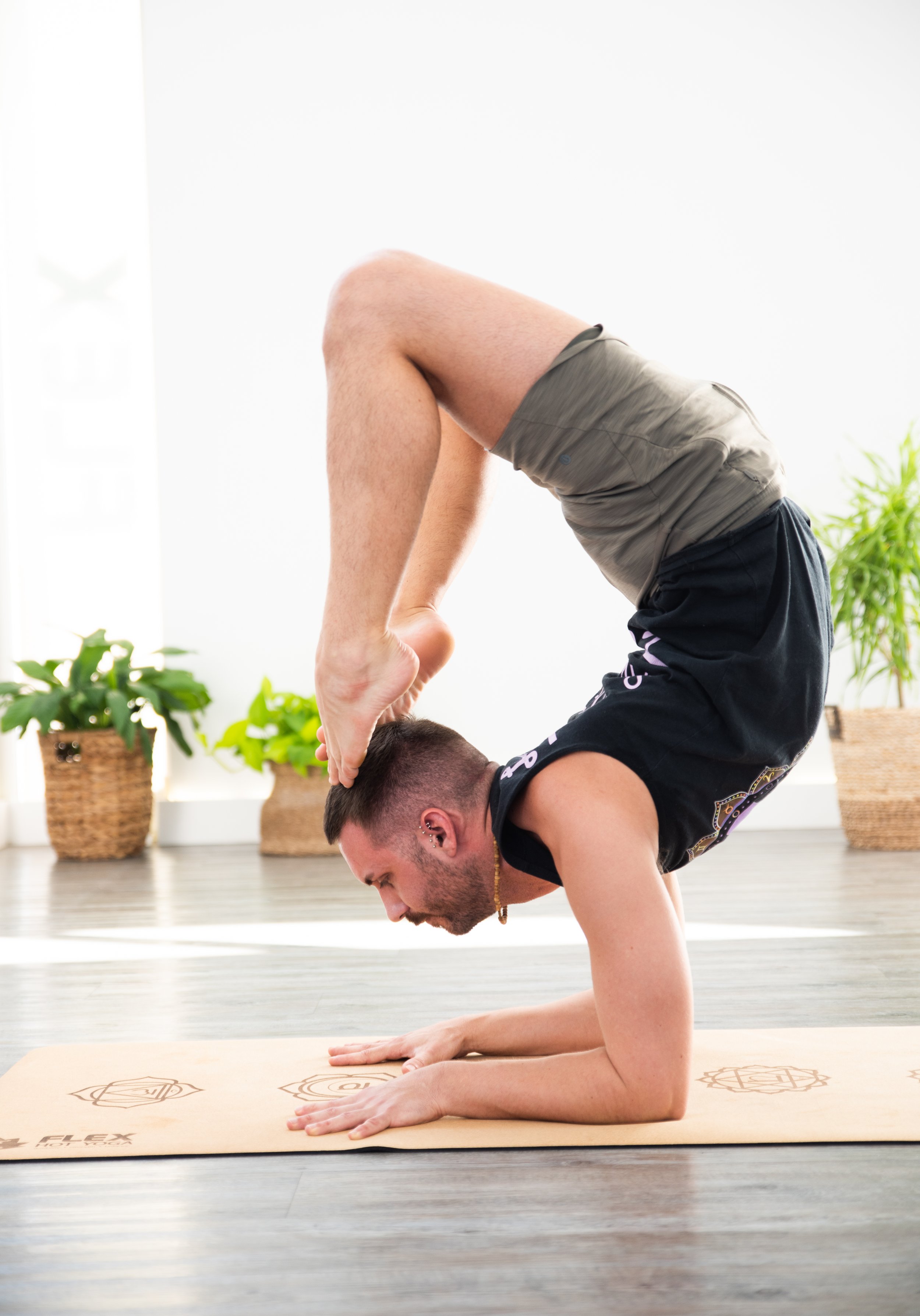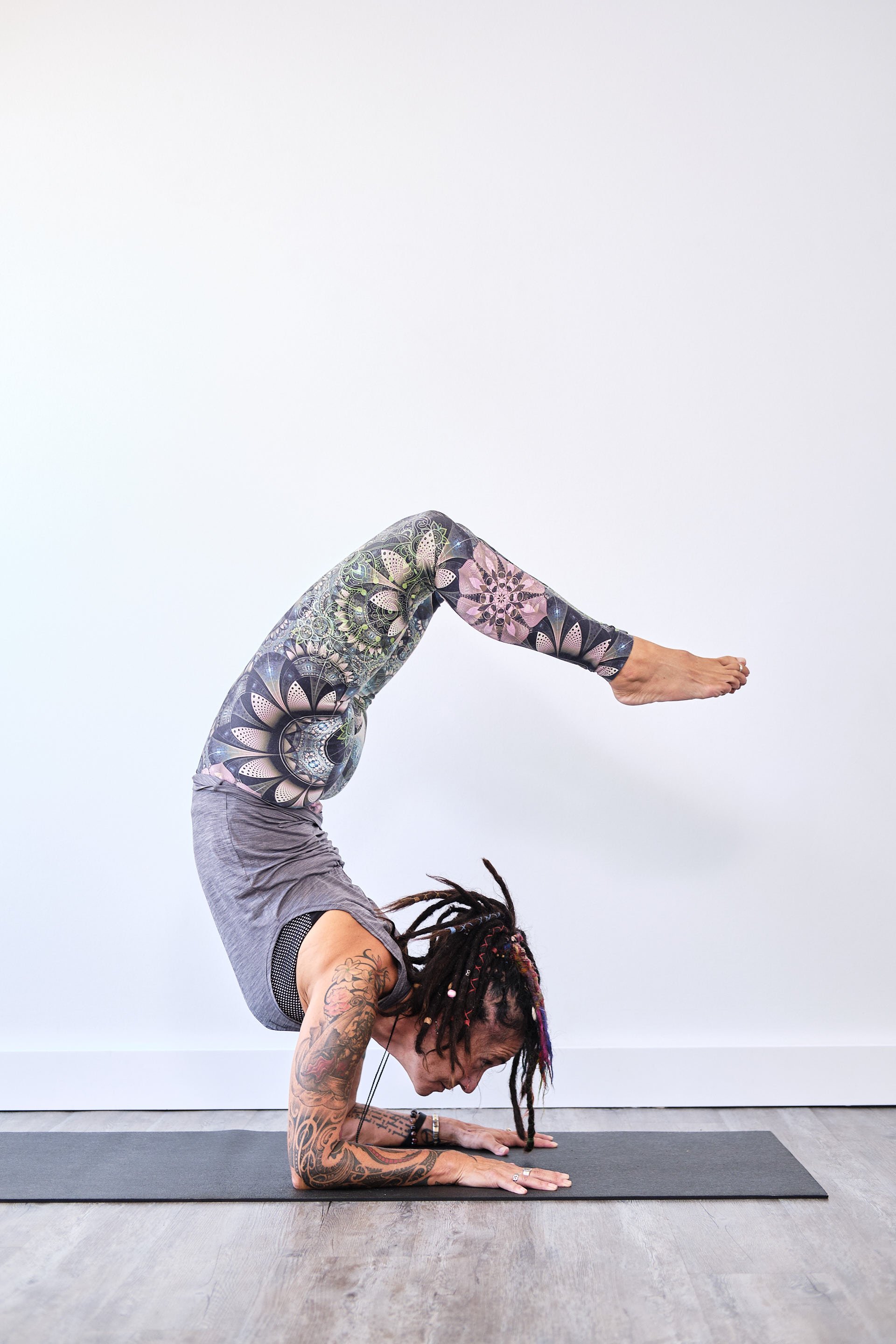Posture of the month: Vrischikasana (Scorpion Pose)
The subjugation of ego
In February, we are practicing Vrischikasana, the Scorpion Pose.
The Sanskrit name is made up of Vrischika (scorpion) and Asana (seat / pose / posture). Contrary to most postures we practice, it’s not one of the classics, but was first mentioned by B.K.S. Iyengar in 1966 in his book ‘Lights On Yoga‘.
It can be practiced resting on your forearms or - for an extra challenge - from a handstand. It is recommended to refrain from practicing Vrischikasana if you suffer from a heart condition. In this case, please consult your GP before practicing, as the inversion and intense bend might aggravate your condition.
Before you start practicing Vrischikasana, it’s recommended to practice handstands (Vrikshasana), the Feathered Peacock Pose (Pincha Mayurasana) and headstands (Shirshasana), to build the strength, mobility and balance needed.
The benefits of practicing Vrischikasana
Firstly, a quick word of warning: to protect your back and prevent injuries, it is recommended to practice bandhas and strengthen your core and shoulders with easier asanas before progressing to Vrischikasana. However, once you get into it, you can expect the following benefits:
Gain strength and improve your stamina
Improve the capacity of your lungs and oxygen intake
Stretch your back, shoulders and chest. By arching your back, you help tone the nerves of the spine
Stretch and tone your abdominal cavity, thus stimulating your liver, stomach, bowels, and appetite
Strengthen your shoulders, arms and wrists
As a heart opener, it opens and expands the chest cavity and diaphragm muscles
Positioning your head below your heart increases the blood flow to the brain
The risk of spondylitis (a type of arthritis) can be reduced
It is said to relieve stress and anxiety, and improve memory and focus
Activate and balance the upper four chakras: crown (Sahasrara), third eye (Ajna), throat (Vishuddha) and heart (Anahata)
“The head, which is the seat of knowledge and power is also the seat of pride, anger, hatred, jealousy, intolerance and malice. These emotions are more deadly than the poison, which the scorpion carries in its sting. The yogi, by stamping on his head with his feet, attempts to eradicate these self-destroying emotions and passions. The subjugation of ego leads to harmony and happiness.”
(B.K.S. Iyengar)
Wise words by one of the foremost teachers of yoga in the 20th century. He encourages us to recognise anarthas (unwanted things, e.g. useless or destructive emotional or behavioural patterns) and overcome them. In Bhakti Yoga, the metaphor often used in this context is that of the heart as a “mirror covered in dust”, affected by different degrees of lust, anger, greed, envy, pride and illusion. As long as head and heart harbour these sentiments, or are exposed to them by association, spiritual practice will be negatively impacted.
This is what Iyengar refers to, when he encourages the yogi to ‘stamp on his own head with his feet’ - basically to ‘get over himself’. Recognise your own shortcomings for what they are, and cultivate a Higher Consciousness.
So are you ready to learn Vrischikasana? Then come along to Flex regularly and practice with us! There are over 25 classes/week, and we will practice it daily during all of February 2023!
This month, we thank Sandra Sorembe from Innerflowyoga for the insights that have informed this blog post.



